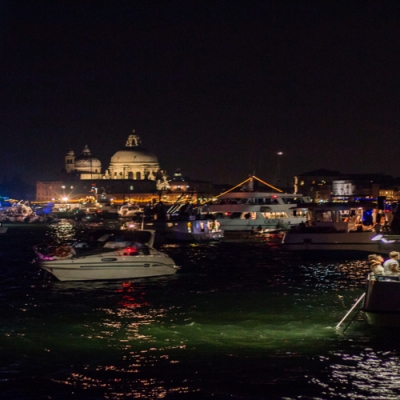VILLA BADOER FATTORETTO
It is said that the fascinating baron was in love with Armida, a noble lady whose home was just on the other side of the Brenta river.
She was married to a nobleman much older than her and each time he left, she used to lit a red lamp on the balcony thus making the baron jump on his gondola and reach her promptly.
According to his custodian, Antonio Rivoletto, who died just a few years ago, baron Von Chantal was convinced that the Villa had once been… a monastery.
Since the area had been involved in continuous wars, he got the idea that the monks could have hidden a “treasure” in the park. So he made poor Antonio and his father Giuseppe dig deeply a certain area of the garden.
What is left of this search is a nice little lake with an island, in the park. As for the story of the monastery, Alessandro Baldan, a historian of the Riviera del Brenta, says that "Pietro Badoer received the property from the monastery of San Sebastiano”. More information can be found in the will left by Filippo Badoer in 1363, kept in the state archives of Padua. It’s a long will, often illegible, which names the monastery of San Sebastiano as guardian of the orphans until they came of age.
The architecture of the 18th century looks extremely nice for the purity and simplicity of the lines.
The interiors are richly decorated and precious historical documents are on display as well as the tools of the Farm Museum.
The Villa is surrounded by a vast park, unrivalled set for phographic services.
Today it houses the well-known Cantina Fattoretto (wine cellar), where the prestigious wines of the Veneto Region are bottled up.
HYSTORICAL NOTES
In 1518 Giacomo Badoer declared in the “conditions” 381R 352c 138R 418 (conditions were like now-a-days income tax returns): "on the island of Sambruson, over the Vecchia Brenta, behind the fornace, there’s a burned-down house with farm yard and fields for which they never paid taxes”
In 1537 Jacomo Badoer son of the late Francesco, declared: "House with garden and two and a half fields”. In 1581 Filippo Badoer: “forty-five fields with vegetable plot, farm yard and the workers’ straw home”.
In 1711 Bernardo Badoer son of the late Giacomo declared:" properties of the old house: mansion with boathouses, farm yard, vegetable plot and garden, little church for my use only. Contiguous: the farmer’s home and the gardener little home".
Pietro Badoer‘s will, written on the 17th of May 1753 left all properties to his sons.
In 1846 ( February 25th ) the Badoer’s heirs sold the villa to Giacinto Foratti.
In 1852 (November 6th ) the new owner is Giovanni Maurogordato.
In 1884 (December 30th ) the property is sold to count Vincenzo Ferrari Bravo.
In 1903 (January 24th) the new owner becomes baron Carlo de Chantal.
In 1945 (July 1st ) the villa was bought by the Fattoretto family which still lives there.
During World War II , the mansion was requisitioned and turned into a German military hospital, then the British army used it as a warehouse and a deposit, leaving it badly deteriorated.
Fattoretto Ulderico bought the villa in 1945 because he considered it an its adjacent land to be the ideal place for his business as winemaker and merchant. He was also interested in the vicinity of the villa to the Brenta river, which for many years had been the natural way of transportation for wine, by barge to Venice. The Villa was restored and embellished 1964 by the architect Piero Pra with the consultation of the architects Asso and Staubler from the Venetian Supervisory of Monuments.
THE FARM MUSEUM
The Museum houses an interesting collection of documents, ancient tools, equipments and instruments for different art and trades, telling the old local farm culture and its traditions.
There are over 20.000 pieces, gathered together from the early 20th century by the current owner, Luigino Fattoretto; these objects form a collection which is unrivalled in the Veneto region. There are farm tools used by carpenters and woodcutters; instruments which were necessary for the work in the fields; as well as typical farmhouse furnishings and kitchens utensils. Another collection is devoted to foot-warmers, irons, looms and clothing. In the end a collection is also devoted to carriages and wagons.
The collection, completed by countless prints and edits, as well as popular religious images is currently in process of being catalogued and is undergoing conservative restoration.
An entire section is dedicated to the wine cellar and another one to millstones.
Dolo, Via Tito 2/Via Badoera – Right Bank - 30031 Dolo – Go to the Map >>
VISITING HOURS
During the months of April, May, June, September and October, the Villa opens on sundays and holidays only.
Guided tours start at 3.00pm, 4.30pm and at 6.00pm
VILLA BADOER/FATTORETTO TICKET FARES
Full Fare: 7€






















